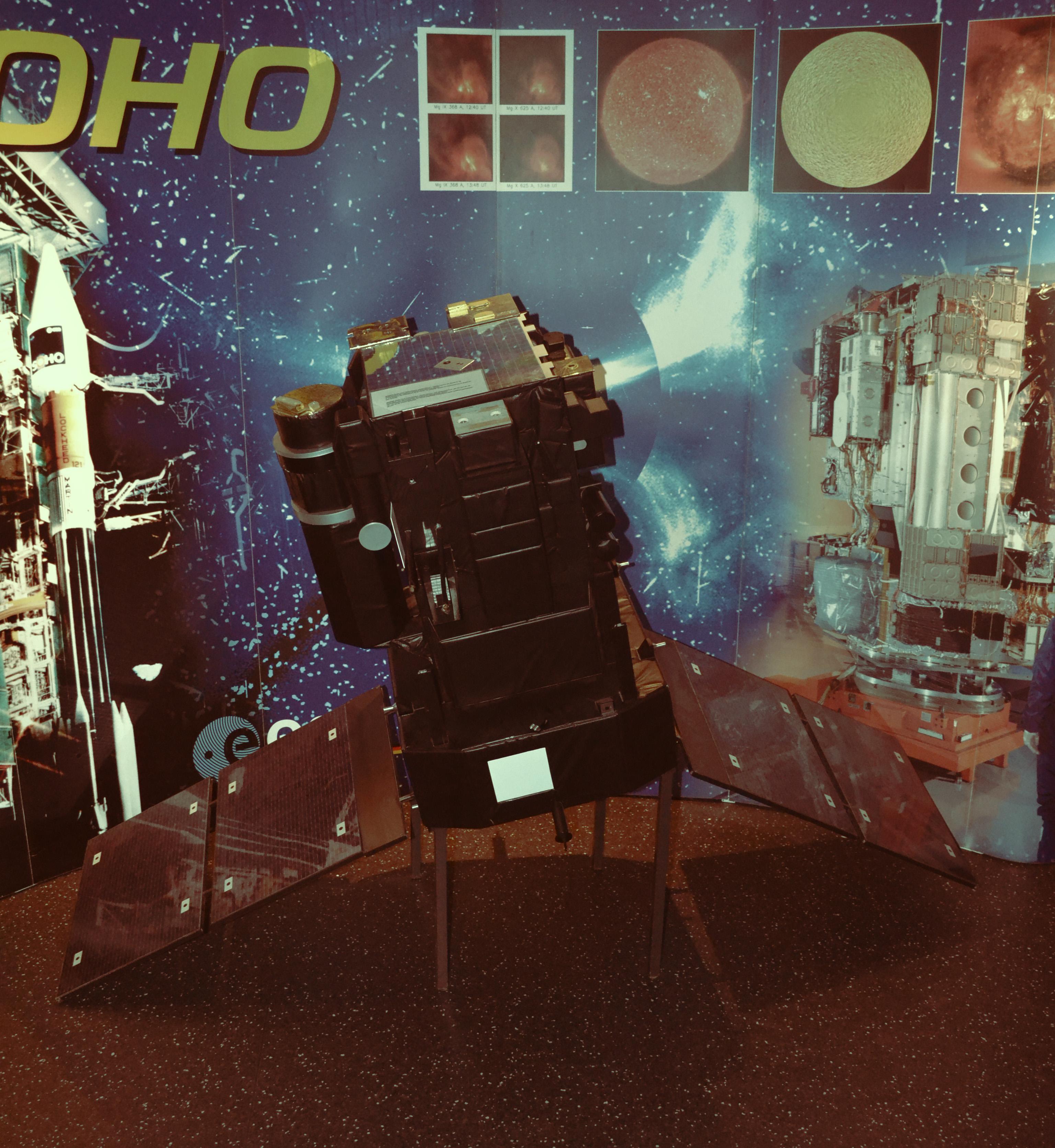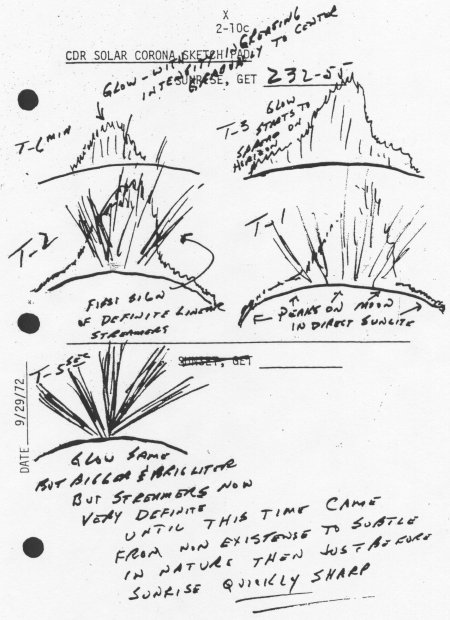|
GEOTAIL
Geotail was a satellite that observed the Earth's magnetosphere. It was developed by Japan's ISAS in association with the United States' NASA, and was launched by a Delta II rocket on 24 July 1992 from Cape Canaveral Air Force Station. The primary purpose of this mission is to study the structure and dynamics of the tail region of the magnetosphere with a comprehensive set of scientific instruments. For this purpose, the orbit has been designed to cover the magnetotail over a wide range of distances: to from the earth. This orbit also allowed it to study the boundary region of the magnetosphere as it skims the magnetopause at perigees. In the first two years the double lunar swing-by technique was used to keep apogees in the distant magnetotail. This involved 14 lunar flybys. In 1993 the computer that controls the Low Energy Particles experiment locked up. Attempts to reset it failed. This problem was solved by changing the trajectory of the craft during a lunar flyby that too ... [...More Info...] [...Related Items...] OR: [Wikipedia] [Google] [Baidu] |
Institute Of Space And Astronautical Science
(ISAS) is a Japanese national research organization of astrophysics using rockets, astronomical satellites and interplanetary probes which played a major role in Japan's space development. Since 2003, it is a division of Japan Aerospace Exploration Agency (JAXA). History The ISAS originated as part of the Institute of Industrial Science of the University of Tokyo, where Hideo Itokawa experimented with miniature solid-fuel rockets ( Pencil Rocket and Baby Rocket) in the 1950s. This experimentation eventually led to the development of the Κ (''Kappa'') sounding rocket, which was used for observations during the International Geophysical Year (IGY). By 1960, the Κ-8 rocket had reached an altitude of 200 km. In 1964, the rocket group and the ''Institute of Aeronautics'', along with scientific ballooning team, were merged to form within the University of Tokyo. The rocket evolved into the L (''Lambda'') series, and, in 1970, L-4S-5 was launched as Japan's firs ... [...More Info...] [...Related Items...] OR: [Wikipedia] [Google] [Baidu] |
Stamatios Krimigis
Stamatios (Tom) M. Krimigis ( el, Σταμάτιος Κριμιζής, born September 10, 1938) is a Greek-American scientist in space exploration. He has contributed to many of the United States' unmanned space exploration programs of the Solar System and beyond. He has contributed to exploration missions to almost every planet of the Solar System.Brief Curriculum Vitae and publications Johns Hopkins University.Europlanet Interview: Stamatios (Tom) Krimigis Europlanet. In 1999, the |
Solar And Heliospheric Observatory
The Solar and Heliospheric Observatory (SOHO) is a European Space Agency (ESA) spacecraft built by a European industrial consortium led by Matra Marconi Space (now Airbus Defence and Space) that was launched on a Lockheed Martin Atlas IIAS launch vehicle on 2 December 1995, to study the Sun. It has also discovered over 4,000 comets.(2,703 discoveries as of 21 April 2014) It began normal operations in May 1996. It is a joint project between the (ESA) and . SOHO was part of the Interna ... [...More Info...] [...Related Items...] OR: [Wikipedia] [Google] [Baidu] |
Satellites Of The United States
A satellite or artificial satellite is an object intentionally placed into orbit in outer space. Except for passive satellites, most satellites have an electricity generation system for equipment on board, such as solar panels or radioisotope thermoelectric generators (RTGs). Most satellites also have a method of communication to ground stations, called transponders. Many satellites use a standardized bus to save cost and work, the most popular of which is small CubeSats. Similar satellites can work together as a group, forming constellations. Because of the high launch cost to space, satellites are designed to be as lightweight and robust as possible. Most communication satellites are radio relay stations in orbit and carry dozens of transponders, each with a bandwidth of tens of megahertz. Satellites are placed from the surface to orbit by launch vehicles, high enough to avoid orbital decay by the atmosphere. Satellites can then change or maintain the orbit by propulsion, ... [...More Info...] [...Related Items...] OR: [Wikipedia] [Google] [Baidu] |
Satellites Of Japan
A satellite or artificial satellite is an object intentionally placed into orbit in outer space. Except for passive satellites, most satellites have an electricity generation system for equipment on board, such as solar panels or radioisotope thermoelectric generators (RTGs). Most satellites also have a method of communication to ground stations, called transponders. Many satellites use a standardized bus to save cost and work, the most popular of which is small CubeSats. Similar satellites can work together as a group, forming constellations. Because of the high launch cost to space, satellites are designed to be as lightweight and robust as possible. Most communication satellites are radio relay stations in orbit and carry dozens of transponders, each with a bandwidth of tens of megahertz. Satellites are placed from the surface to orbit by launch vehicles, high enough to avoid orbital decay by the atmosphere. Satellites can then change or maintain the orbit by propulsion, ... [...More Info...] [...Related Items...] OR: [Wikipedia] [Google] [Baidu] |
Geospace Monitoring Satellites
A satellite or artificial satellite is an object intentionally placed into orbit in outer space. Except for passive satellites, most satellites have an electricity generation system for equipment on board, such as solar panels or radioisotope thermoelectric generators (RTGs). Most satellites also have a method of communication to ground stations, called transponders. Many satellites use a standardized bus to save cost and work, the most popular of which is small CubeSats. Similar satellites can work together as a group, forming constellations. Because of the high launch cost to space, satellites are designed to be as lightweight and robust as possible. Most communication satellites are radio relay stations in orbit and carry dozens of transponders, each with a bandwidth of tens of megahertz. Satellites are placed from the surface to orbit by launch vehicles, high enough to avoid orbital decay by the atmosphere. Satellites can then change or maintain the orbit by propulsion, ... [...More Info...] [...Related Items...] OR: [Wikipedia] [Google] [Baidu] |
Lunar Atmosphere
The atmosphere of the Moon is a very scant presence of gases surrounding the Moon. For most practical purposes, the Moon is considered to be surrounded by vacuum. The elevated presence of atomic and molecular particles in its vicinity compared to interplanetary medium, referred to as "lunar atmosphere" for scientific objectives, is negligible in comparison with the gaseous envelopes surrounding Earth and most planets of the Solar System. The pressure of this small mass is around , varying throughout the day, and in total mass less than 10 metric tonnes. Otherwise, the Moon is considered not to have an atmosphere because it cannot absorb measurable quantities of radiation, does not appear layered or self-circulating, and requires constant replenishment due to the high rate at which its gases get lost into space. Roger Joseph Boscovich was the first modern astronomer to argue for the lack of atmosphere around the Moon in his ''De lunae atmosphaera'' (1753). Sources One source of ... [...More Info...] [...Related Items...] OR: [Wikipedia] [Google] [Baidu] |
Magnetosheath
The magnetosheath is the region of space between the magnetopause and the bow shock of a planet's magnetosphere. The regularly organized magnetic field generated by the planet becomes weak and irregular in the magnetosheath due to interaction with the incoming solar wind, and is incapable of fully deflecting the highly charged particles. The density of the particles in this region is considerably lower than what is found beyond the bow shock, but greater than within the magnetopause, and can be considered a transitory state. Scientific research into the exact nature of the magnetosheath has been limited due to a longstanding misconception that it was a simple byproduct of the bow shock/magnetopause interaction and had no inherently important properties of its own. Recent studies indicate, however, that the magnetosheath is a dynamic region of turbulent plasma flow that may play an important role in the structure of the bow shock and the magnetopause, and may help to dictate the ... [...More Info...] [...Related Items...] OR: [Wikipedia] [Google] [Baidu] |
Magnetosphere
In astronomy and planetary science, a magnetosphere is a region of space surrounding an astronomical object in which charged particles are affected by that object's magnetic field. It is created by a celestial body with an active interior dynamo. In the space environment close to a planetary body, the magnetic field resembles a magnetic dipole. Farther out, field lines can be significantly distorted by the flow of electrically conducting plasma, as emitted from the Sun (i.e., the solar wind) or a nearby star. Planets having active magnetospheres, like the Earth, are capable of mitigating or blocking the effects of solar radiation or cosmic radiation, that also protects all living organisms from potentially detrimental and dangerous consequences. This is studied under the specialized scientific subjects of plasma physics, space physics and aeronomy. History Study of Earth's magnetosphere began in 1600, when William Gilbert discovered that the magnetic field on the surface ... [...More Info...] [...Related Items...] OR: [Wikipedia] [Google] [Baidu] |
Flux Transfer Event
A flux transfer event (FTE) occurs when a magnetic portal opens in the Earth's magnetosphere through which high-energy particles flow from the Sun. This connection, while previously thought to be permanent, has been found to be brief and very dynamic. The European Space Agency's four Cluster spacecraft and NASA's five THEMIS probes have flown through and surrounded these FTEs, measuring their dimensions and identifying the particles that are transferred between the magnetic fields. Formation Earth's magnetosphere and the Sun's magnetic field are constantly pressed against one another on the dayside of Earth. Approximately every eight minutes, these fields briefly merge, forming a temporary "portal" between the Earth and the Sun through which high-energy particles such as solar wind can flow. The portal takes the shape of a magnetic cylinder about the width of Earth. Current observations place the portal at up to 4 times the size of Earth. Simulations Since Cluster and THEMIS hav ... [...More Info...] [...Related Items...] OR: [Wikipedia] [Google] [Baidu] |
International Solar-Terrestrial Physics Science Initiative
The International Solar-Terrestrial Physics Science Initiative (or ISTP for short) is an international research collaboration between NASA, the ESA, and ISAS. Its goal is to study physical phenomena related to the Sun, solar wind and its effects on Earth. See also *List of heliophysics missions This is a list of missions supporting heliophysics, including solar observatory missions, solar orbiters, and spacecraft studying the solar wind. References External links NASA's ISTP web site Sun {{sun-stub ... [...More Info...] [...Related Items...] OR: [Wikipedia] [Google] [Baidu] |
Cluster II (spacecraft)
Cluster II is a space mission of the European Space Agency, with NASA participation, to study the Earth's magnetosphere over the course of nearly two solar cycles. The mission is composed of four identical spacecraft flying in a tetrahedral formation. As a replacement for the original Cluster spacecraft which were lost in a launch failure in 1996, the four Cluster II spacecraft were successfully launched in pairs in July and August 2000 onboard two Soyuz-Fregat rockets from Baikonur, Kazakhstan. In February 2011, Cluster II celebrated 10 years of successful scientific operations in space. , its mission has been extended until the end of 2022. China National Space Administration/ESA Double Star mission operated alongside Cluster II from 2004 to 2007. Mission overview The four identical Cluster II satellites study the impact of the Sun's activity on the Earth's space environment by flying in formation around Earth. For the first time in space history, this mission is able to ... [...More Info...] [...Related Items...] OR: [Wikipedia] [Google] [Baidu] |




